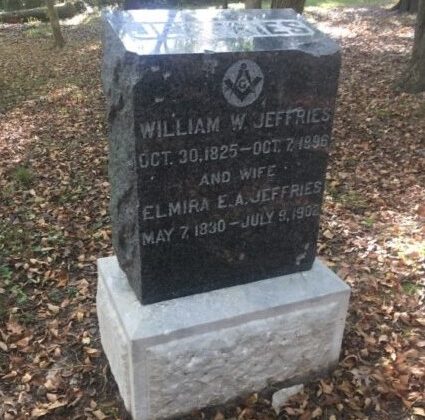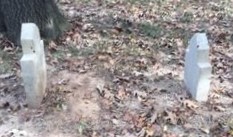Nineteenth-century gravestones, like those in the Union Campground Cemetery, use a great deal of symbolic imagery to convey meaning about the deceased and the sentiments of their families and friends. A prevalent 19th-century symbol exists in the pair of clasped hands on Jane C. Caldwell’s gravestone. This symbol is interpreted by many sources as a goodbye, where the living … [Read more...] about Gravestone Images in the Union Campground Cemetery: Researched and Conserved by Jasmine Currey
The main purpose of a gravesite is to provide a resting place, but it is also to provide a place where family and friends can visit and show respect to the deceased. Styles of graves and gravestones can vary in style due to income, social class, location, religious beliefs, and time period. Thomas Patterson Ellison’s grave is the oldest in the Union Campground Cemetery, and … [Read more...] about Gravestone Shapes and Types of Graves in the Union Campground Cemetery: Researched and Conserved by Emma Schupbach
In the nineteenth and early twentieth centuries, cemeteries in the Midwest United States were seldom integrated. It is quite significant, therefore, that African Americans are buried in the Union Campground Cemetery, with both African American and Caucasian graves located throughout the cemetery. Because many African Americans of the Ozarks region had limited finances and … [Read more...] about African American Gravestones in the Union Campground Cemetery: Researched and Conserved by Robyn Slusher



